BUYER'S BRIEF
James Walshe says that the Frogeye is proof that size doesn’t matter
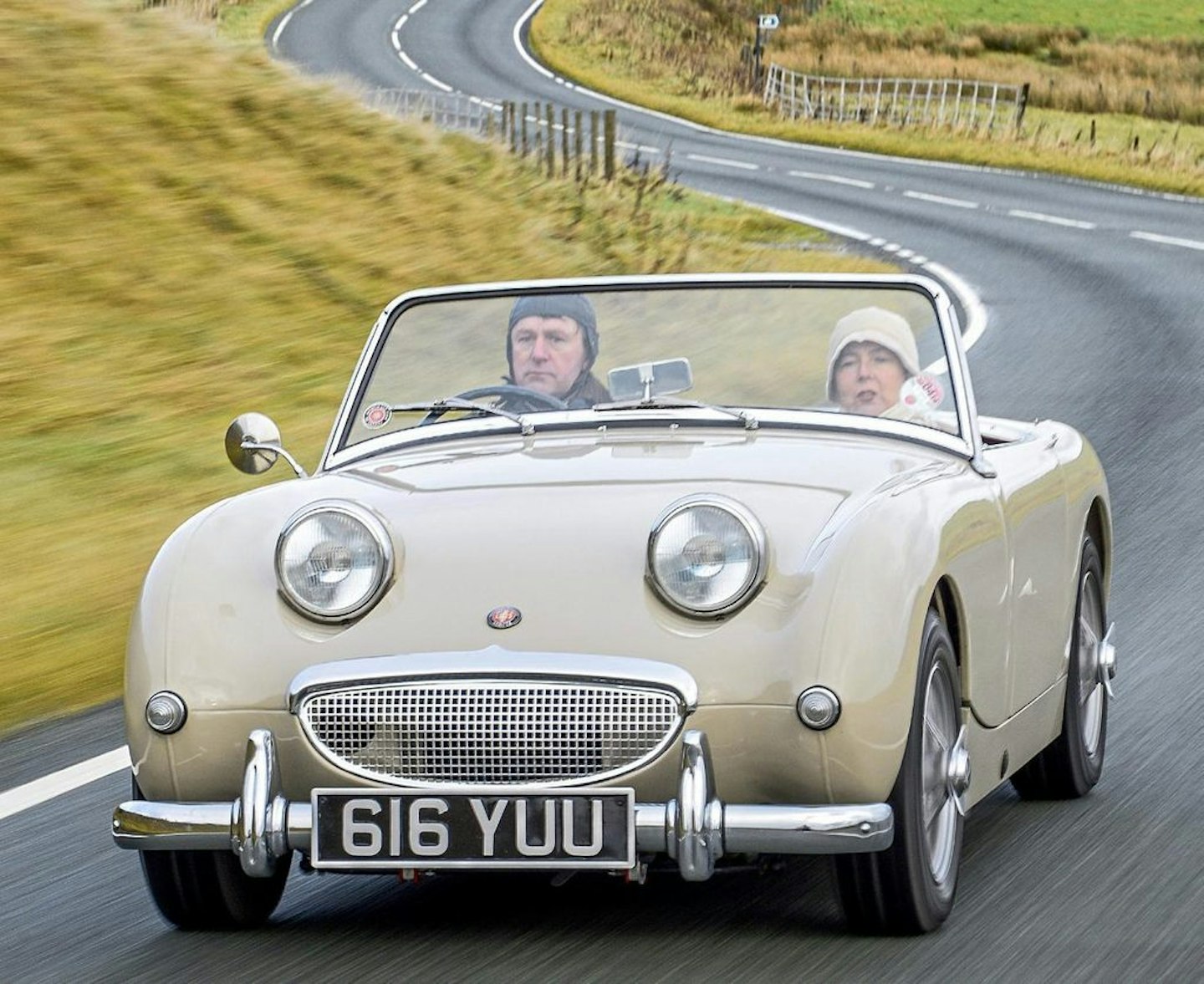
So much fun – regardless of the great British weather.
MARKET ANALYSIS
The days of picking up a basket case project Sprite for peanuts are well and truly over, as the very best now fetch around fifteen to twenty grand. The lovable Frogeye saw significant rises in the past few decades but tidy ones are not unreasonable now, with an excellent example selling in April this year at Bonhams for £12,650. The original Sprite remains a canny investment though – it’s hard to see how you’d lose out. There are plenty of dedicated Austin-Healey specialists in the UK – despite many specialising mostly in the big ’Healeys. These days, very few decent project cars turn up in this country, most having been restored years ago and cherished by doting owners ever since. Have a chat with members of the clubs to find the best. The days of picking up a basket case project Sprite for peanuts are well and truly over, as the very best now fetch around fifteen to twenty grand. The lovable Frogeye saw significant rises in the past few decades but tidy ones are not unreasonable now, with an excellent example selling in April this year at Bonhams for £12,650. The original Sprite remains a canny investment though – it’s hard to see how you’d lose out. There are plenty of dedicated Austin-Healey specialists in the UK – despite many specialising mostly in the big ’Healeys. These days, very few decent project cars turn up in this country, most having been restored years ago and cherished by doting owners ever since. Have a chat with members of the clubs to find the best.
Why you want one
You can’t possibly dislike a Frogeye, can you? Or can you? Is this fun little sportster really as joyous to own as it is to look at? We’re glad to announce that it’s mostly good news, even if you intend to buy a shabby project car. Such is the widespread wisdom available – not to mention outstanding club, specialist and parts support – ownership of an Austin-Healey Frogeye Sprite is one of simple pleasures and mostly uncomplicated repairs. There are, of course, numerous pitfalls to running any Fifties classic… especially if it has been subjected to British roads, but get to know how they tick, and we reckon this is one of the most satisfying sports cars you’ll ever own.
BMC launched the Frogeye in Monte Carlo, and caused a stir with the press and public alike. It was meant to have retractable headlamps, but BMC cut development costs on Gerry Coker’s clever unitary-bodied masterpiece before it emerged with its charismatic bug-eyes and that grinning grille. Intended as a spiritual successor to sporty pre-war versions of the Austin Seven, the ‘Frogeye’ was fitted with a 948cc A-Series engine and shared parts from numerous other vehicles in the BMC stable. That makes this one very easy car to maintain. Just hop behind the wheel, revel in the purity of it and suddenly you understand why legions of buyers have fallen in love with it over the decades. You’ll see around 80mph out of a standard car – but there are plenty of tuned examples out there. Whatever you end up with, you can have huge fun well within the national speed limit, as this is a car that always feels faster than it is. We need more of that in the world!
The inspection
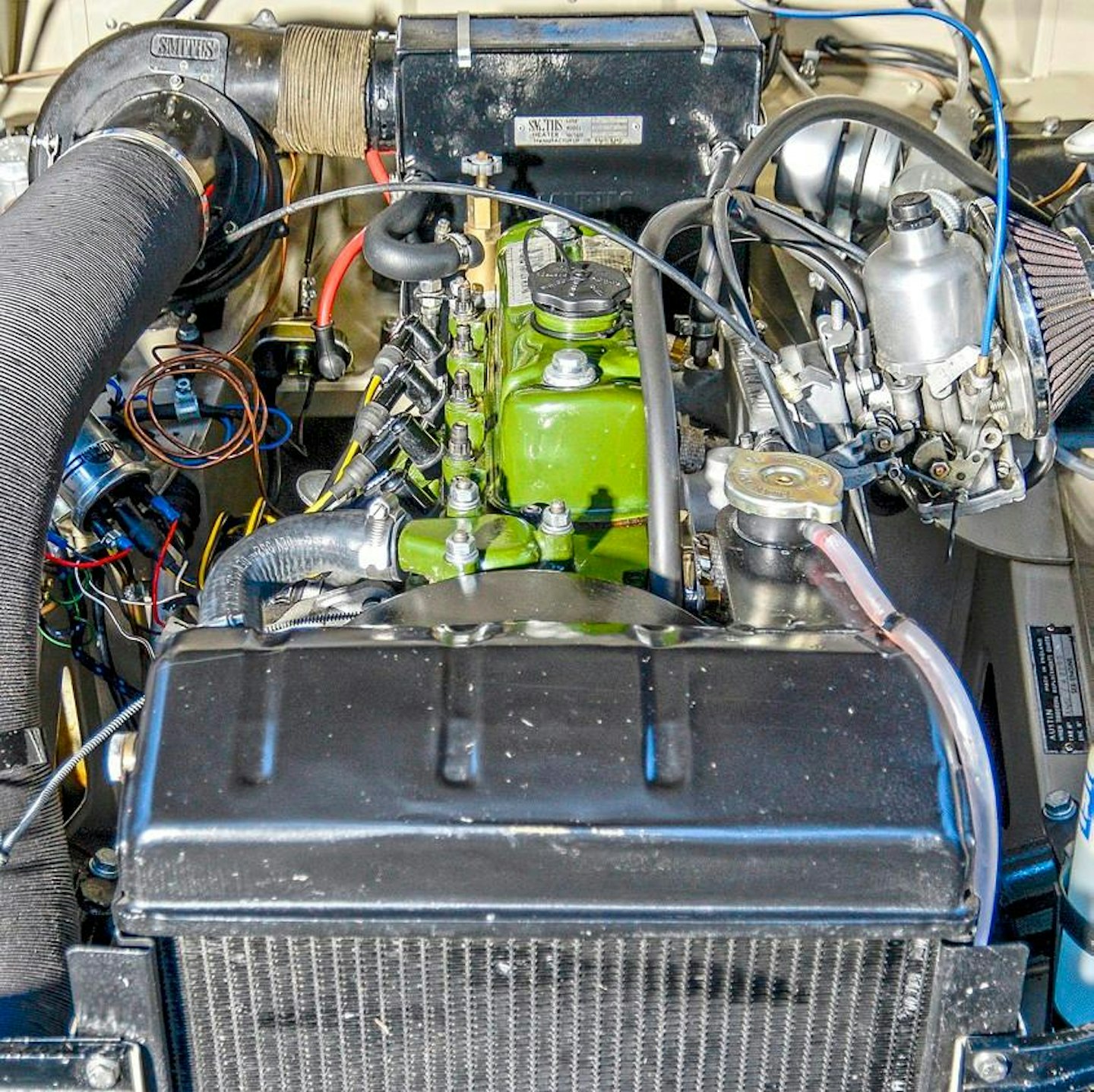
ENGINE While later Sprites had 1098cc or 1275cc engines, the ‘Frogeye’ only got the 948cc unit – in standard guise at least. Lots, like this one, have been modified, so make sure you have evidence these mods were done properly.

CABIN It’s basic inside and the trim is delightfully simple. It can all be refreshed without breaking the bank, so can probably be considered among the least of your concerns when buying a Frogeye.
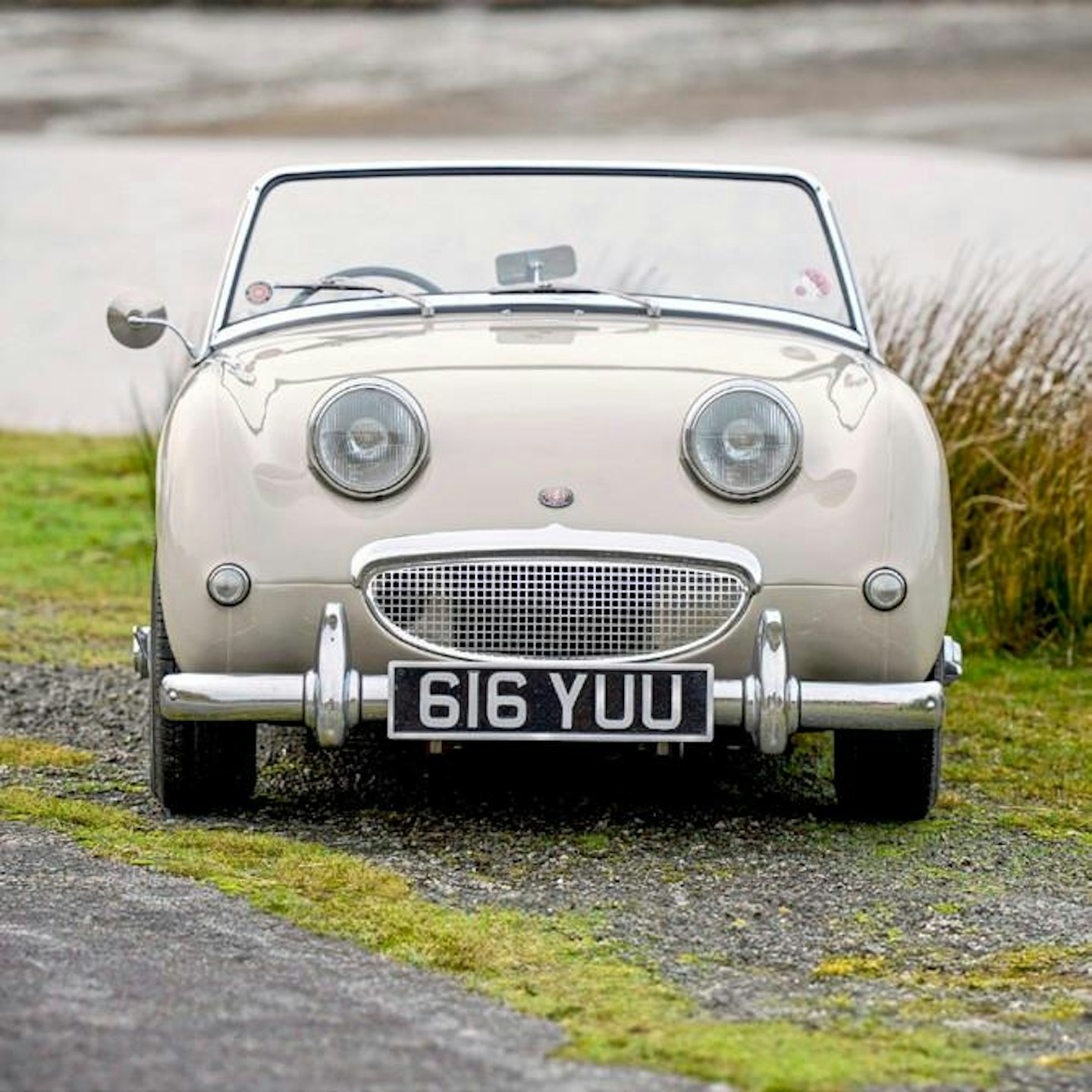
BODY The Sprite is of a very clever monocoque design which means the strength of what lies beneath that pretty face really matters. Be wary of fresh underseal that could be masking horrors beneath and pay particular attention to the panel gaps and alignment.
Firstly, it’s wise to decide what level of DIY skills you are in possession of, because the Sprite’s clever monocoque body shell can harbour wallet-emptying amounts of corrosion if you buy a bad one. Bodged and filler stuffed so-called ‘restorations’ are still out there, so allocate an appropriate amount of time to inspect the car inside and out before you commit to buying. Rot spots include the lower wings and door bottoms, while it’s not uncommon to discover crusty metal around the A-posts, wheel arches and battery tray. The seams between wings and bonnet/ boot panels are another problem area, so take a close look at those areas, while the inner sills need careful checking even if the outers look fine. Check the quality of the chrome plating on the brightwork. If you can, get the car on a ramp and check the state of the bulkheads, jacking points – plus the floors of the cabin and boot. Repairs here can be a major undertaking and, obviously, the lack of a boot lid hampers access, so be vigilant. Look for a gap of three inches between the rear wheelarch and the tyre. Anything much less and it could mean that the rear spring boxes have dissolved.
That delightfully revvy A-series engine just needs the usual health checks. Look for at least 40psi of oil pressure when it has warmed up and listen out for the rumble of worn big-end bearings. Excessive blue smoke from the exhaust points to valve stem oil seals on the overrun or cylinder bores that are past their best and check for escaping oil (a leaking crank scroll seal is an A-series bugbear) and coolant and any signs of cylinder head gasket failure. Fuel and ignition systems are thankfully cheap and easy to overhaul.
The clatter of a worn timing chain and valve-gear is often the result of neglected oil changes but a top end overhaul is both cheap and straightforward. A spin-on oil filter conversion is good news when it comes to improving lubrication, though. Look for signs of overheating caused by a silted-up cooling system. Lastly, with upgrades and engine swaps so common, make sure that you quiz the vendor about the car’s exact specification.
The four-speed gearbox – donated by the A35 – lacks synchromesh on first, but should shift sweetly. Second gear synchromesh is usually the first to go once the ‘box is worn and check for jumping out of gear on the over-run. The Frogeye’s gearbox has ratios more suited to the Austin A30, so fitting the ’box from a later Spridget is a good idea for those in need of a more relaxing drive. The ratios are far better spaced, and the gearing is raised at the same time. It’s also worth listening out for knocking from the rear caused by wear in the half shaft splines and checking that the back axle is still oil tight.
Vague handling will need investigation so take a good look at the lever-arm dampers and springs, the latter of which can rust and fracture. Rock the front wheels with the car off the ground (if you can) to reveal wear in kingpins and wheel bearings. Stiff steering suggests a lack of regular lubrication. The all-round drum brakes are trouble-free unless neglected, but don’t be surprised to find a Midget disc conversion at the front, especially if a bigger engine has been fitted.
You needn’t worry too much about a cabin that’s in need of renovation as long as the bodywork is in sound condition; every part is available – although it’s worth checking the condition of the hood and making sure that the wiring hasn’t degraded through age. Rubber mats were fitted originally, although these are likely to have been ditched in favour of carpets; either way, be sure to peek underneath for signs of hidden frilly floor sections. Modification is often a fun way of increasing appeal of a Frogeye for modern roads. Swapping the standard engine for a 1098cc or 1275cc lump is easy; the latter will give you 75-80bhp after a bit of tuning (air filter, carbs, spicier camshaft and maybe some cylinder head work). Lots of Mini bits fit, too. If you fit a 1275cc engine, it’s easy to swap the standard cylinder head for a Metro A+ item, enabling you to use unleaded petrol. While you’re at it, fit a fruitier camshaft; the Midget and Sprite Club recommends an AC Dodd item from A-series guru, ML Motorsport.
Meanwhile, fitting a thicker anti-roll bar from a later Spridget pays dividends, while poly bushes will help to stiffen things up nicely. Finally, with unassisted drums all-round, the Frogeye isn’t overburdened with stopping power, but help is at hand in the form of a front disc setup from a Spridget. For even more stopping power, you can plumb in a servo, but chances are you won’t need this. It’s a lightweight zinger of a car – a classic British sports car that’ll never fail to put a grin on your face!
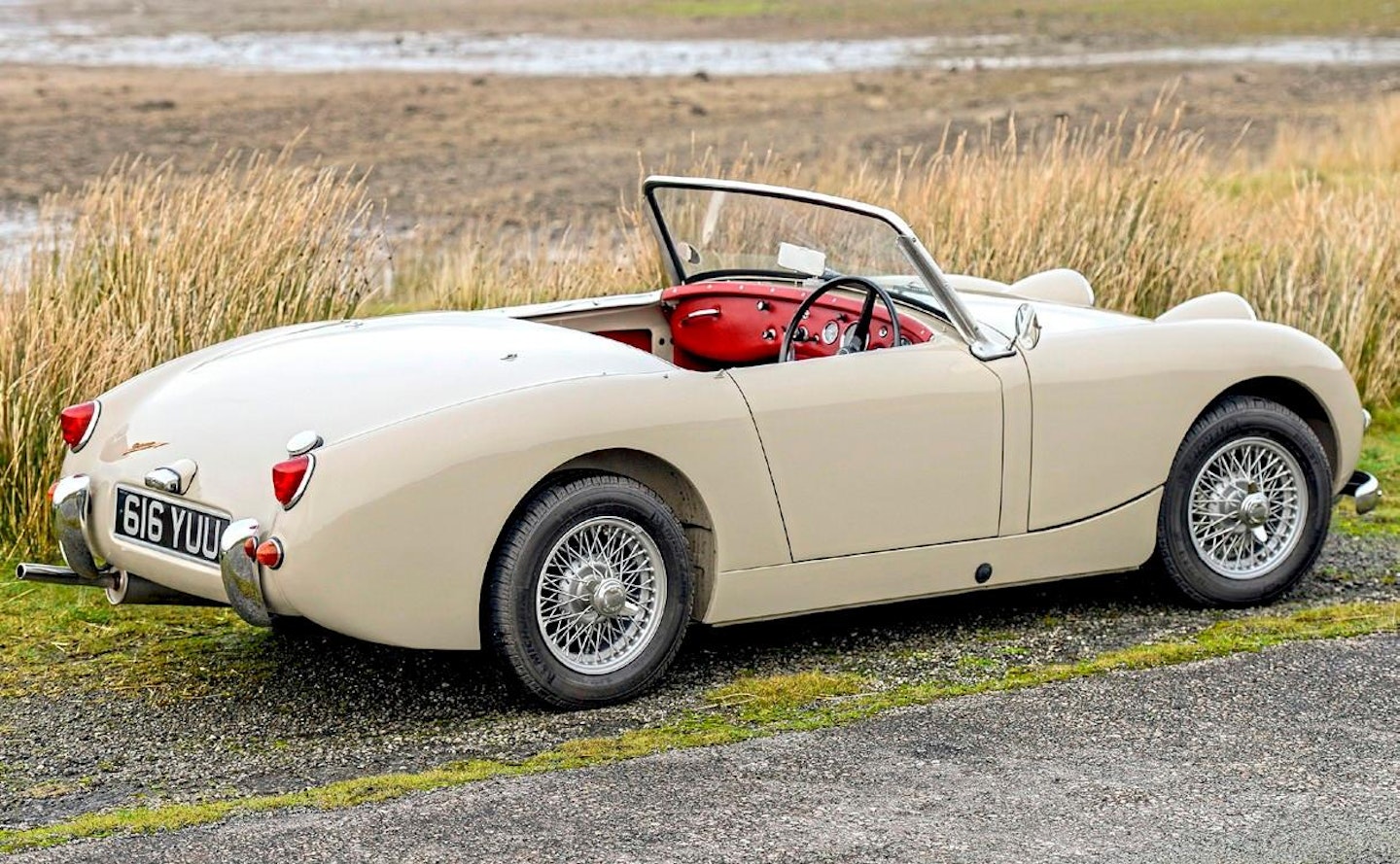
No more than it needs to be – Frogeye has perfect proportions.
WHAT TO PAY
PROJECT £2000-£3000
GOOD £6000-£8500
EXCELLENT £15,000-£20,000
TECH SPEC
ENGINE 948CC/4-CYL/OHV
POWER 43BHP@5000RPM
TORQUE 52LB FT@3300RPM
GEARBOX 4-SPEED MANUAL
TOP SPEED 83MPH
0-60MPH 16SEC
ECONOMY 33-41MPG
USEFUL CONTACTS
Austin-Healey Club UK, austinhealeyclub.com
Healey Drivers’ Club, healeydriversclub.co.uk
Midget and Sprite Club, midgetandspriteclub.com
WHAT IT’S LIKE TO OWN A FROGEYE SPRITE
Danny Hopkins on reuniting with a special old friend of the mag
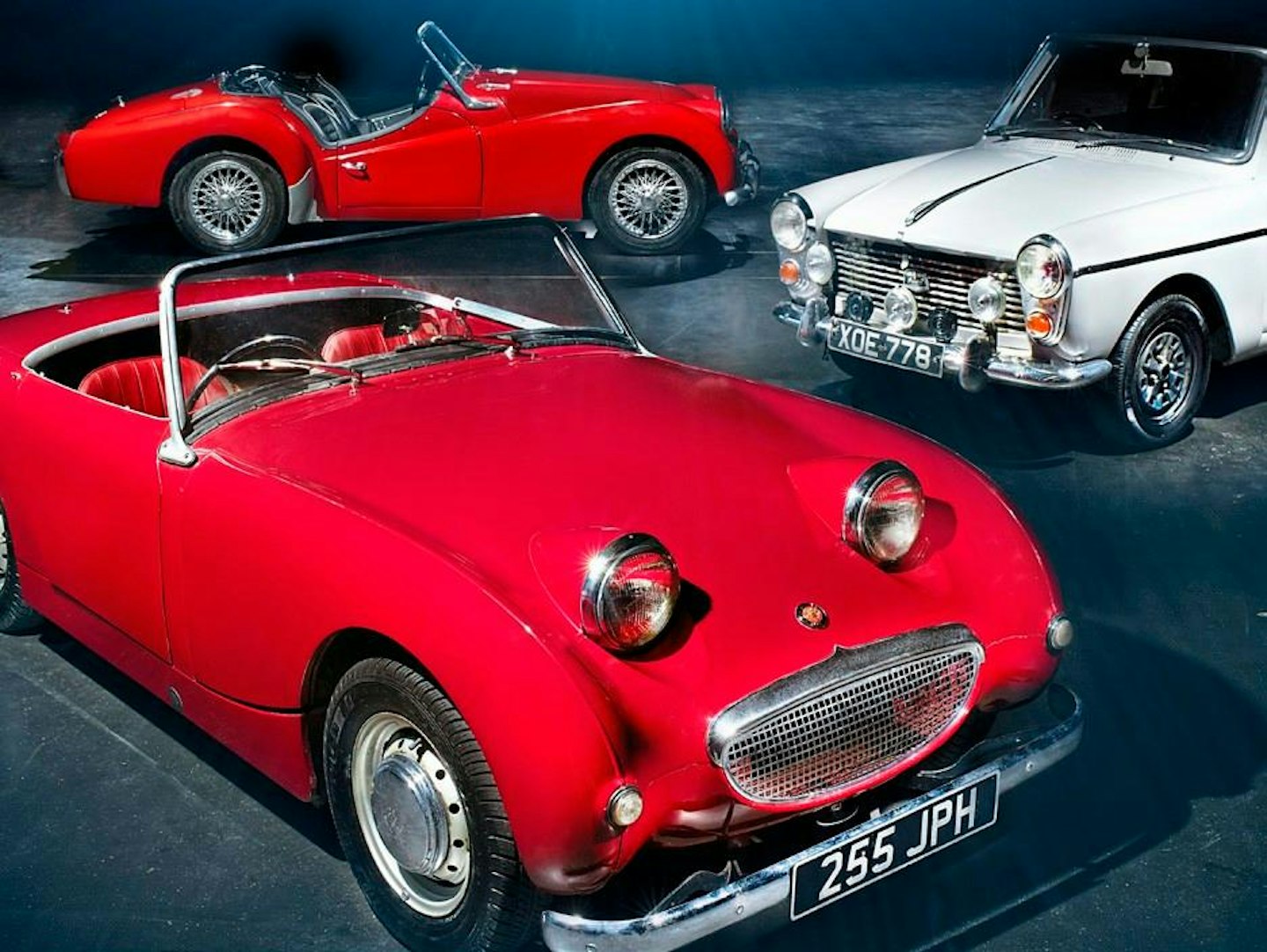
PC’s project cars from 45 years ago reunite.
Frogeye Sprites have appeared periodically in the pages of Practical Classics over the past 45 years but there’s one that stands out for us. Back in the May 1980 issue, our very first, the we offered a 1959 Austin-Healey Sprite as a competition prize. The inner of that competition was the brother of current keeper Colin Robinson from Gloucestershire, for whom that time was especially precious. ‘I went with Richard to collect his prize from the then editor, Paul Skilleter, at Practical Classics HQ, at that time based in Malvern. It was so exciting for two young brothers, aged just 21 and
17!’ The pair drove ‘JPH’ home to Reading in heavy rain. ‘The hood wasn't the best fit, so I had to hold onto it from inside to stop the slipstream lifting it up!’ Richard joined the Austin-Healey Club, and they started going to events. By now he'd moved to Shrewsbury, where he drove the Sprite regularly with one of his two daughters, Emily and Sophie.
Colin says his brother passed away in 2008 after a long battle with cancer. ‘Shortly before, we talked about the Frogeye and I agreed to be its custodian, promising to keep it in the family as an heirloom. It will never be sold on.’
From before the prize giving, and since, the Sprite has a rich history and still runs its original 948cc engine. Apparently the 1980 Practical Classics team bought it from a musician in St John's Wood in London and were particularly happy the car had a rust-free and original steel bonnet – it is fitted to the car to this day!
Subscribe to a PC Print+ Subscription today and you'll get instant digital access PLUS FREE UK delivery so you'll never miss an issue again. Check out our offers today.
